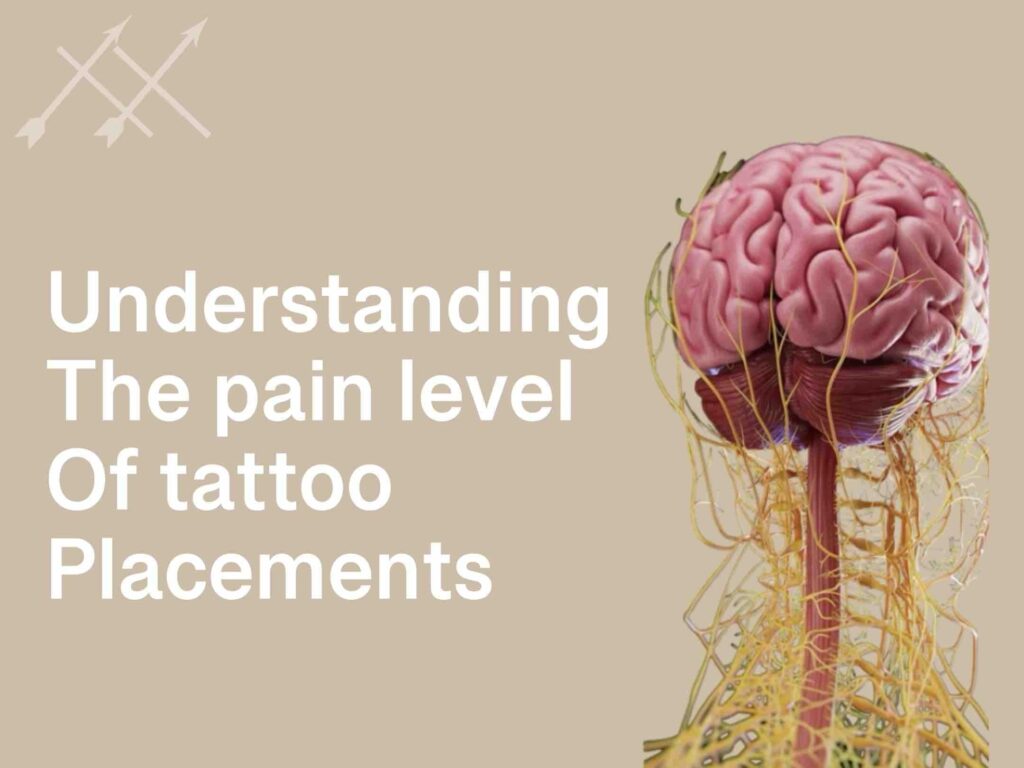Understanding that pain level of tattoo placement

Understanding the Pain Levels of Tattoo Placement
When it comes to getting a tattoo, pain is often a concern for many. However, tattoo pain levels can vary significantly depending on the placement, your personal pain tolerance, and the tattoo’s size and design. Understanding these factors can help you prepare mentally and choose a placement that suits your comfort level and style. Machu Tattoo Studio, with award-winning artists and branches across India, ensures a comfortable and hygienic experience, no matter where you choose to place your tattoo. Here’s a breakdown to help you understand the pain levels of different tattoo placements.
1. Low-Pain Tattoo Areas
Outer Arm and Outer Thigh: These areas have more muscle and fat, reducing the sensation of pain. Ideal for first-time tattoo seekers, tattoos on the outer arm and thigh are known to cause minimal discomfort. Many people opt for bold designs here, knowing these areas provide more room for larger tattoos without much pain.
Calves and Shoulders: Calves and shoulders are less sensitive as well, with thicker skin and less nerve density. For anyone nervous about tattoo pain, these areas are a great choice as they cause only mild discomfort.
Calves and Shoulders: Calves and shoulders are less sensitive as well, with thicker skin and less nerve density. For anyone nervous about tattoo pain, these areas are a great choice as they cause only mild discomfort.
2.Moderate-Pain Tattoo Areas
Upper Back and Chest: The upper back and chest are popular for larger tattoos, but they are areas with moderate pain levels. The pain can be slightly more noticeable around the shoulder blades, collarbone, and near the ribs. However, the pain is usually manageable for most people, and these placements are chosen for statement tattoos that highlight the body’s natural shape.
Forearm and Upper Arm: With moderate pain levels, these areas are well-suited for anyone looking for a balance between visibility and comfort. The upper arm, in particular, is popular for sleeve tattoos that extend to the forearm. While the forearm’s inner area can be more sensitive, it’s still a good spot for those seeking a manageable pain experience.
Forearm and Upper Arm: With moderate pain levels, these areas are well-suited for anyone looking for a balance between visibility and comfort. The upper arm, in particular, is popular for sleeve tattoos that extend to the forearm. While the forearm’s inner area can be more sensitive, it’s still a good spot for those seeking a manageable pain experience.
3. High-Pain Tattoo Areas
Rib Cage: Known for being one of the most painful places to get a tattoo, the rib cage has thin skin and little muscle padding over the bones. The pain here can be intense, especially for detailed designs that require longer sessions. However, rib cage tattoos are highly popular for their aesthetic appeal, and many find the result worth the temporary discomfort.
Elbow and Kneecap: These areas are close to the bone and can be very uncomfortable due to the lack of cushioning. Tattoos on the elbow or kneecap tend to cause sharp sensations, making them challenging for many. Designs on these areas may need additional touch-ups due to natural wear from joint movements.
Ankle and Foot: The ankle and foot have thin skin, bones close to the surface, and plenty of nerve endings, making these areas more painful. Tattoos here can feel intense, especially on the top of the foot, and require proper care as they heal to avoid fading.
Elbow and Kneecap: These areas are close to the bone and can be very uncomfortable due to the lack of cushioning. Tattoos on the elbow or kneecap tend to cause sharp sensations, making them challenging for many. Designs on these areas may need additional touch-ups due to natural wear from joint movements.
Ankle and Foot: The ankle and foot have thin skin, bones close to the surface, and plenty of nerve endings, making these areas more painful. Tattoos here can feel intense, especially on the top of the foot, and require proper care as they heal to avoid fading.
4. Extremely High-Pain Tattoo Areas
Inner Wrist and Inner Bicep: These areas have thinner skin and are filled with nerve endings, making them more sensitive. Pain can vary, but these locations are often described as sharp and tingling. Many people still choose these spots for tattoos with personal significance, and the results can be beautiful and delicate.
Hands and Fingers: Tattoos on the hands and fingers are extremely sensitive due to the proximity of bones and the abundance of nerve endings. While trendy, finger tattoos tend to fade faster and may require regular touch-ups. The pain can be intense, but it’s often tolerable for smaller designs.
Head and Face: Known to be some of the most painful tattoo areas, tattoos on the face and head come with an intense, constant sensation due to the thin skin and high nerve concentration. These areas are for those truly dedicated to body art, as the pain is high and the designs are very visible.
Hands and Fingers: Tattoos on the hands and fingers are extremely sensitive due to the proximity of bones and the abundance of nerve endings. While trendy, finger tattoos tend to fade faster and may require regular touch-ups. The pain can be intense, but it’s often tolerable for smaller designs.
Head and Face: Known to be some of the most painful tattoo areas, tattoos on the face and head come with an intense, constant sensation due to the thin skin and high nerve concentration. These areas are for those truly dedicated to body art, as the pain is high and the designs are very visible.
Choosing the Right Pain Level for Your Tattoo Placement
Selecting the best placement for your tattoo comes down to a mix of your pain tolerance, the tattoo’s size and detail, and your preferences. Areas like the outer arm, shoulder, and calf are perfect for first-timers or anyone concerned about pain, while more seasoned tattoo lovers might explore placements like the rib cage or ankle for intricate, impactful designs. At Machu Tattoo Studio, our experienced tattoo artists help guide you through this decision process to ensure you’re well-prepared for the experience.
Pain Management Tips from Machu Tattoo Studio
1. Relax and Breathe: Anxiety can heighten your pain perception. Breathing deeply and staying calm helps ease discomfort.
2. Stay Hydrated:Hydrated skin is easier to work with and can reduce the sensation of pain.
3. Use Tattoo Protector Cream: Machu Tattoo Studio’s Tattoo Protector Cream not only helps heal the tattoo but also provides comfort to your skin post-tattoo session. Apply it as per your artist’s guidance to soothe and protect the tattooed area.
4. Plan for Breaks: For larger designs in high-pain areas, discuss break options with your tattoo artist.
2. Stay Hydrated:Hydrated skin is easier to work with and can reduce the sensation of pain.
3. Use Tattoo Protector Cream: Machu Tattoo Studio’s Tattoo Protector Cream not only helps heal the tattoo but also provides comfort to your skin post-tattoo session. Apply it as per your artist’s guidance to soothe and protect the tattooed area.
4. Plan for Breaks: For larger designs in high-pain areas, discuss break options with your tattoo artist.
FAQ’s
Yes, larger tattoos can intensify pain in sensitive areas, while smaller tattoos are generally easier to tolerate.
Machu Tattoo Studio provides numbing cream upon request for added comfort, especially for high-pain areas.
Some people acclimate to the sensation, especially in long sessions. Artists at Machu Tattoo Studio ensure to keep you comfortable throughout.
While all tattoos have some level of discomfort, areas like the outer arm, shoulder, and calf are typically less painful.
Our Tattoo Protector Cream soothes the skin post-session, aiding the healing process and reducing itchiness and discomfort.
Persistent, intense pain after a tattoo may indicate infection. Contact Machu Tattoo Studio if you experience unusual pain, swelling, or redness after getting your tattoo.


